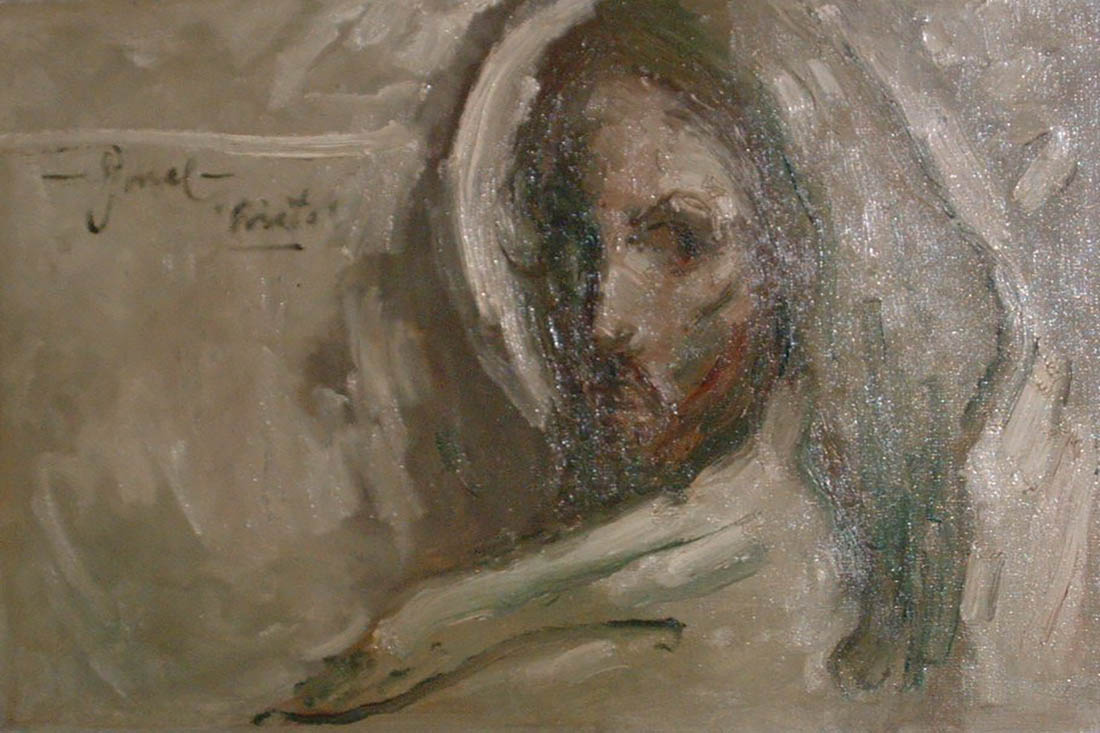The painter of Las Beatas, orphan girls and religious themes, had an eventful life. His irreverent posture before a society full of false morals and discrimination, led him to live great objections between his wishes and the life that he was given.
For this reason, a victim of alcoholism, poor diet and finally tuberculosis, Alfredo Fuentes Pons or better… Fidelio Ponce de León died at a young age in the capital.
According to those who had the opportunity to meet him, Fidelio was a man of great talent and sensitivity, values that disturbed his soul to capture on canvas; sad eyes and pale faces, pleading for better times.
The works that the Provincial Museum of Camagüey treasures, born from the afflicted brushes of Fidelio Ponce, are a posthumous tribute to that painter from Camagüey, who managed to transcend, precisely because of the reflection of his pale and serious colors.
In the museum
Admiring his work and wanting to write about this artist from Camagüey, I went to the Museum, where I was received by the researcher Raiza Martínez Delgado and the curator and young plastic artist, Orlando García Fajardo.
 We began to tour the plastic arts room, now under repair, but they kindly took me to appreciate the works and to my surprise an unknown work with the original signature of Fidelio was rescued a few months ago and now ponders the collection, totally breaking with the colors and techniques that we are used to seeing from the author.
We began to tour the plastic arts room, now under repair, but they kindly took me to appreciate the works and to my surprise an unknown work with the original signature of Fidelio was rescued a few months ago and now ponders the collection, totally breaking with the colors and techniques that we are used to seeing from the author.
It is another of his “woman’s heads” the first is undated and shows the usual ocher colors, the one found dates back to 1934, however, it is a pastel technique, with a variety of colors, so that it is very difficult to associate it with those of Fidelio. With the recent acquisition, there are five in total, the original works that the museum treasures.
With pride and passion for art, Orlando assures us that it is a joy to have these rarities, which bring us closer to the controversial figure of brief and long-suffering existence.
Raiza’s look
In the wonderful courtyard of the Museum we sat down to talk about Ponce and with admiration she comments that since the beginning she was passionate about his work, for her he was a “great artist”, who according to the experts: experimented and played with shapes and textures, which can be reinterpreted as many times as you look at them, but sadness and longing prevail in each one.
Only the painting discovered recently, breaks with the canons, but it is not entirely a happy one either, it is more colorful, such as his landscape work, another from the collection that also deviates from his usual themes, but in both the mist or veil of their feelings is present.
His adventurous and irreverent spirit made Fidelio a long-suffering being, excluded from the gatherings of the guild of his time, who like almost all geniuses, achieved relevance after his death.
About the Fuentes family
In these days of searching, I found little treated edges of the life and work of the artist from Camagüey Alfredo Fuentes Pons, but my curiosity is still not satisfied. I always wish for a chronicle to reveal the human being, the person of flesh and bones, his family life…
I finally found his great-niece Nivia Fuentes Pino, who told me that her grandfather was Fidelio’s only brother and lived proud of his talent and saddened by the separation from his older brother who decided with his art to seek his fortune in the capital, since then, visits to the city were shortened.
Alfredo and Emilio were orphaned from their mothers, when the second was born, they were raised by the devout aunts of his works, from whom they learned religiosity and austerity. Although his finances were never abundant, at each outburst of homesickness Fidelio returned to visit the family and share with them, because they were very close, not as other stories say.
But he also knew that he was a dreamer, he invented imaginary trips and when he missed classes in San Alejandro, he told his classmates that he was in any country in Europe, however he only left the island for a scholarship in Spain from which he returned not long after, almost defeated by the disease, some of those absences brought him to Camagüey.
None of his original works remained in his family estate, not even the ones he signed PLC (for food) when he sold them for any measly price, just to be able to eat.
After dusting off some of the sorrows that tormented Fidelio Ponce during his eventful existence, I can only join Raiza’s opinion that he was a genius, one of those who, clinging to his brush, failed to change the society of the 40’s of the last century, and in his attempt and helplessness, his health and soul left him.
Translated by: Aileen Álvarez García








